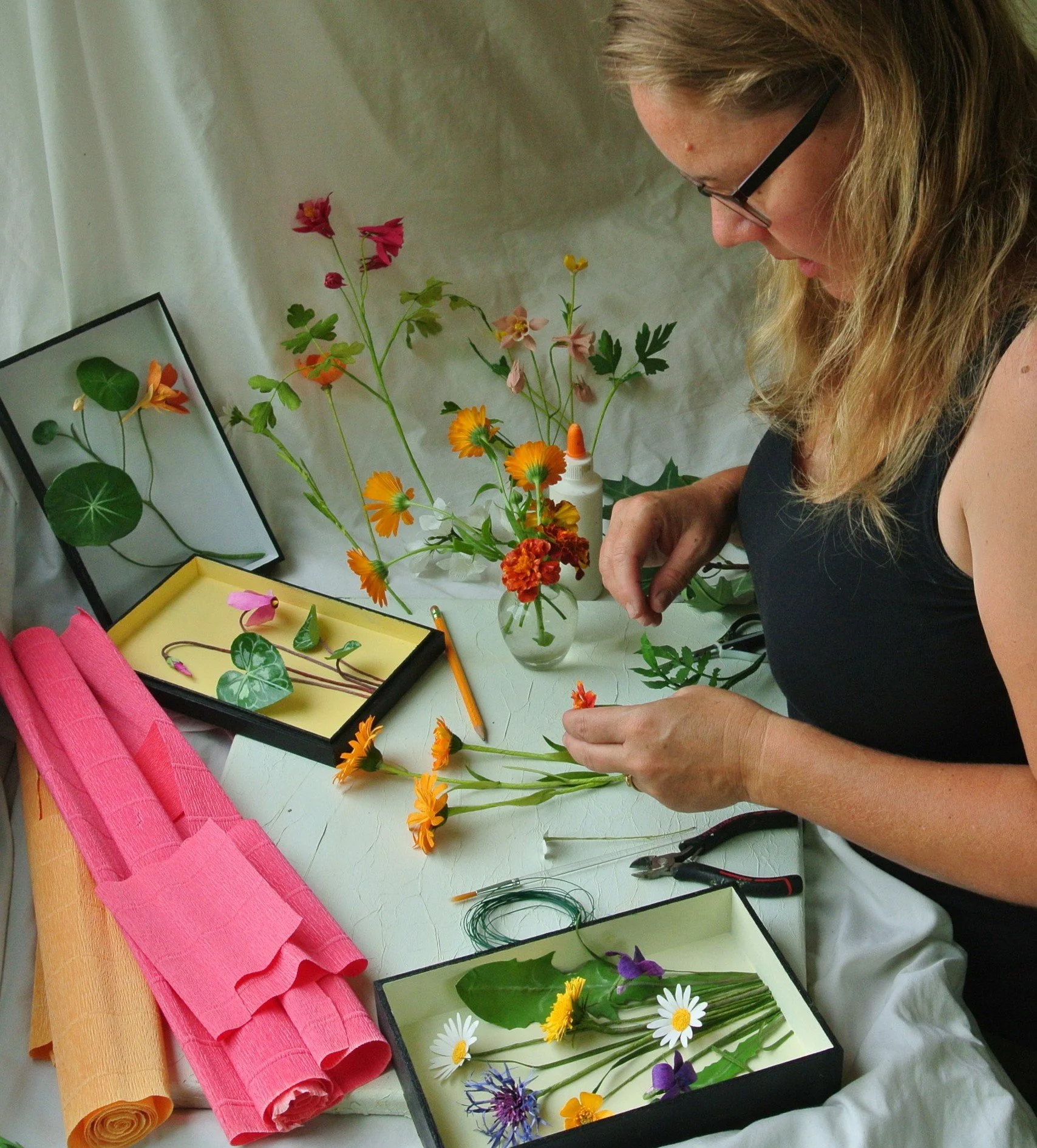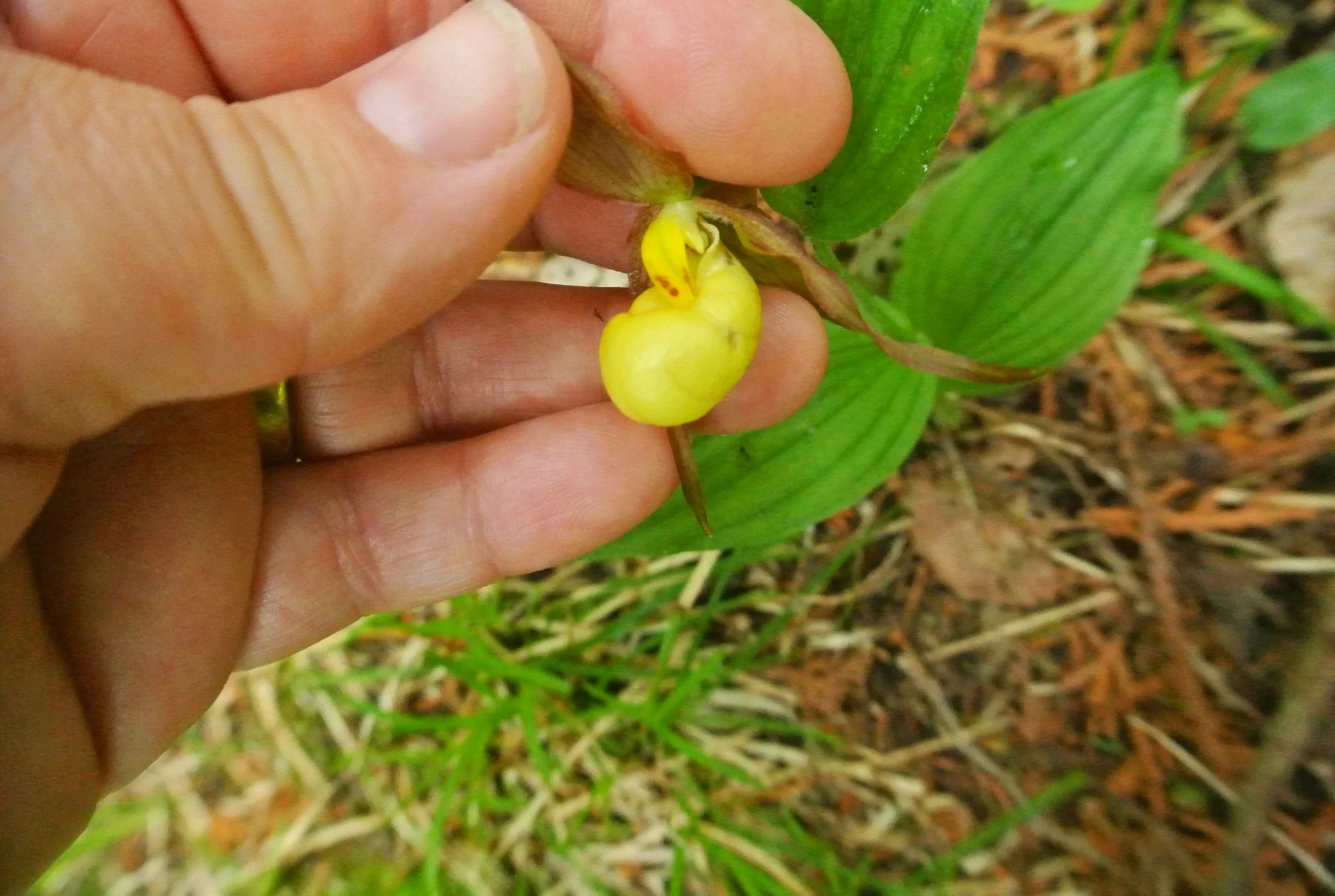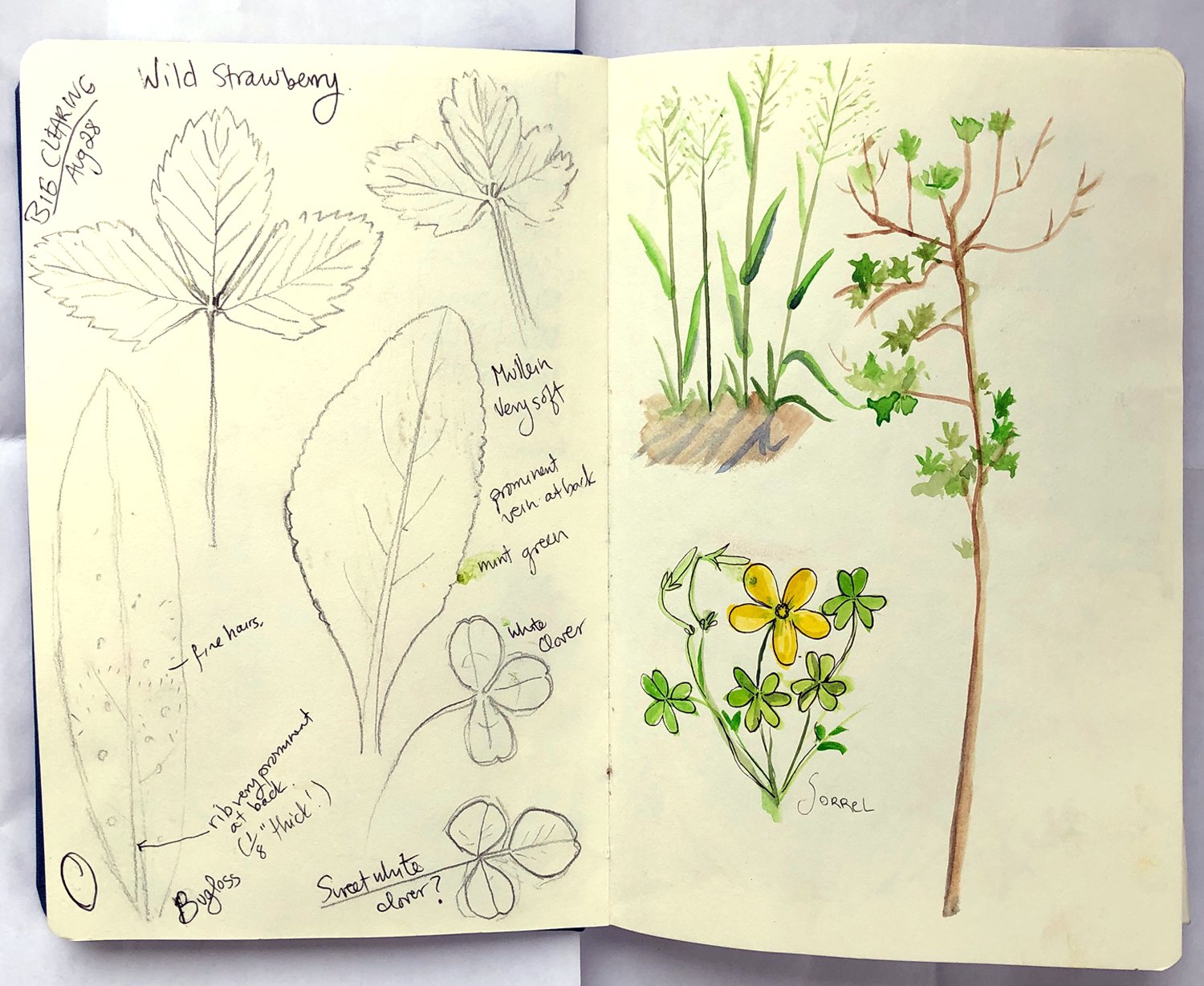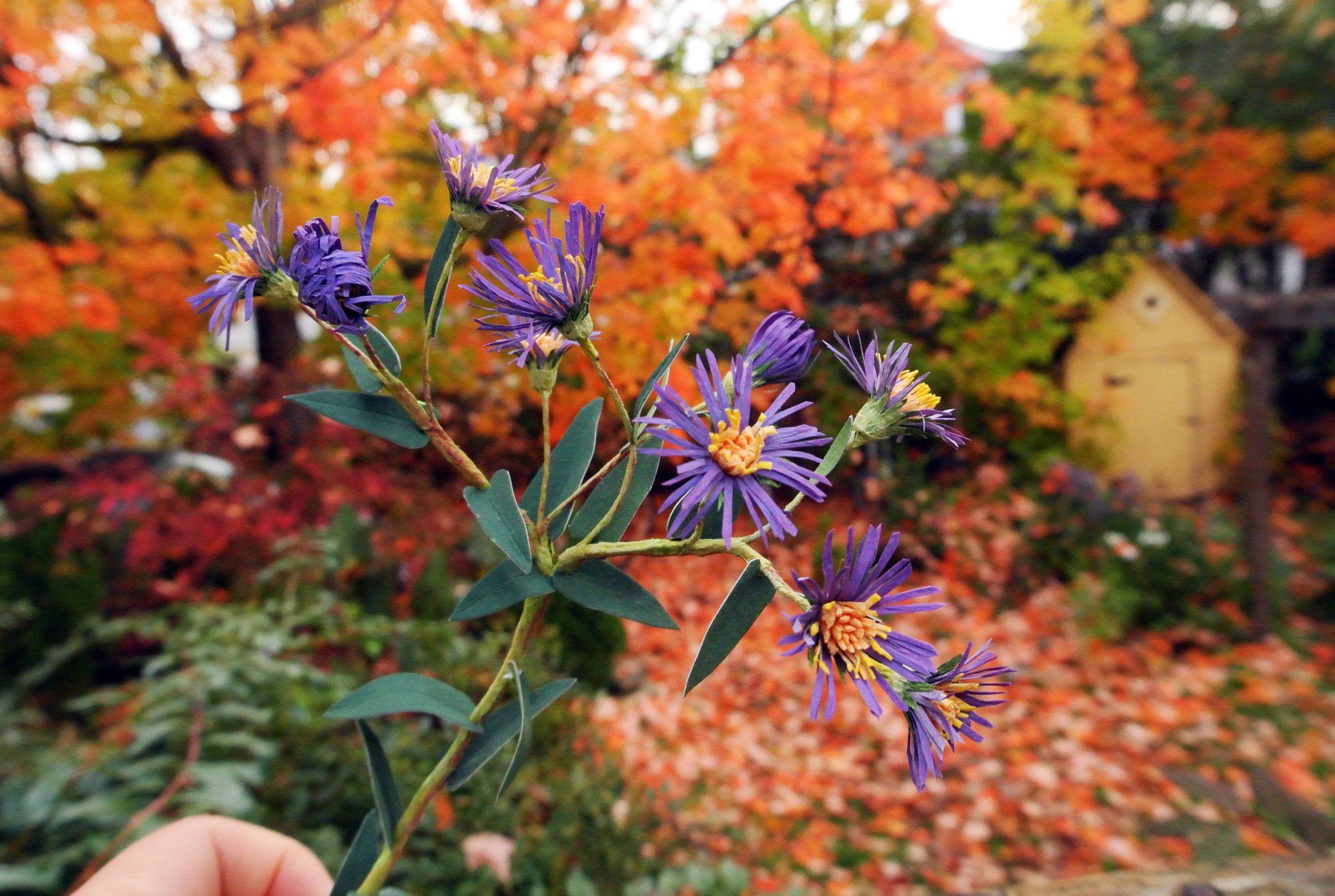I am an artist living in Eastern Ontario, Canada, who makes flowers and plants out of paper. My process of finding a subject to work on, studying it, and creating a three-dimensional flower is one of intense connection with the plant and with nature itself. As I work to refine my craft, I find myself becoming more in tune with the plants and flowers around me. Recently I have been studying the flowers growing wild on my 6 acre patch of land near Lanark, Ontario. The resulting paper wildflowers form part of a continually evolving collection, that is as much a record of that place as a written diary would be.
My favourite place to be is in the forest, observing plants, trees and other wildlife. I’m always amazed at how different it is each time I go- even in the depth of winter. I also love paddling along the river and observing all of the flowers and plants along the banks. There is such a rich variety of life near water.
My process:
I’ve been making flowers and plant out of paper for about 15 years. Over the years I’ve learned when and where I can find certain flowers blooming and I will often go and seek them out. But I’m always on the lookout for new discoveries, too!
When I find a flower I want to recreate I will document it first. I take photos and make drawings, recording time and location and making notes about colour, size, and other characteristics. If the flower is abundant, I pick it and press it. My own personal herbarium is a prized possession; something that I turn to again and again for inspiration and accurate information. Sometimes I trace the petals and leaves into my sketchbook for reference later. This process helps me understand the flower or plant in a way that looking at photographs just doesn’t do.
Once I have the flower documented, I can proceed with making a design. Often I’ll work in white first just to get the shape and size correct. I like to work with all sorts of different papers, from crepe paper to recycled cardboard to convey different textures and weights. Some plants have thick, shiny leaves, and others have fine, delicate blossoms, details that I try to reflect in my finished piece. Sometimes I add bits of cotton or varnish to add to the effect.
I also think about the colour. I will dye, paint, and layer papers together to get the colour right. Sometimes plants have tiny spots or lines and I will draw those on with ink. It is much easier to get the right colour if I’m working from a live plant.
Assembling the flowers is the most exciting part. I get to see the result of my research and design come to life! My studio has become like an indoor garden- with all of my favourites around me!
Working with plants in this observational way has helped me capture the whole essence of a plant. Often I will add buds or dead or dried leaves, seed pods, or fruit. I love to see how plants and flowers change through the season and I try to capture that in my work. When a flower sculpture is finished, I usually mount it inside a shallow shadow box for display. Again I will use the real plant as a guide to pose the stems and leaves naturally within the box. I like the graphic quality of a three-dimensional plant within a square box. I try to pay attention to the negative space around the flower and the background colour and texture. Mounting my pieces in this way encourages careful observation from the viewer. When I watch people look at my work I am amazed at the emotional reactions to the different plants. I often hear wonderful stories of peoples’ connections to specific flowers. Wildflowers seem to be especially powerful in bringing about emotional connection.
The process of transforming observation into a piece of art is a magical way to learn about and express the world around you. I encourage everyone to get outside, observe nature, and express your observations, be it as a sketch, journal, or some other art form.
About Linda:
I am an artist working out of my home studio in Almonte, Ontario, Canada. I use all sorts of paper and paint, along with glue and wire, to make realistic plants and flowers. I sell my work through my website under my business name, Daydream Flowers. I have exhibited my flowers in Canada and the United States and my pieces can be found in collections around the world.
Web Address: www.daydreamflowers.ca
Instagram: @Daydream_Flowers
Email: Lvohamilton@gmail.com
















